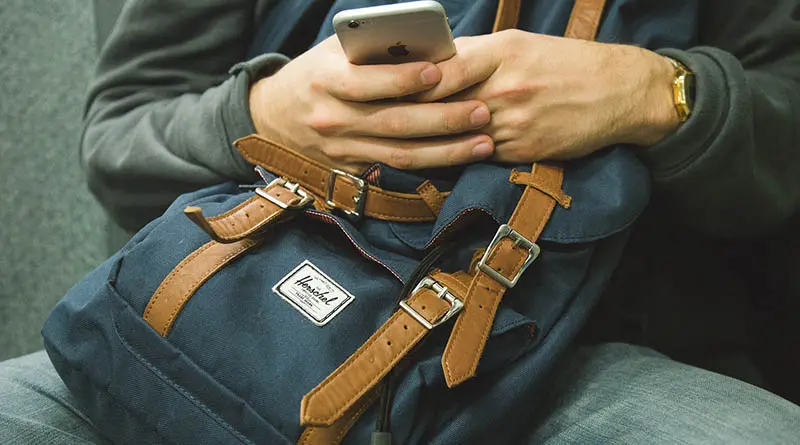All William Wilson wanted to do was keep his phone number. He’d had the same number for 36 years, and everyone — friends, family, colleagues — knew it. And, most importantly, he knew his phone number by heart. But his new phone company didn’t seem to care. So when he switched service, it issued a new number, despite repeated requests. Since then, he’s been trying to get it switched back to his old, familiar number — and to get a refund for the costs he incurred. Why did the company make porting his phone number so hard?
Wilson’s consumer problem is a reminder that, in an age where customer service usually is automated, the machines still can’t read your mind and divine your wants and needs. But it’s also a case study in how to lose your phone number.
Wilson, who lives in the United States but whose case took place in the U.K., has a home in Newcastle upon Tyne in northeast England.
“I tried switching phone and broadband from Sky to BT,” he says. “Total disaster.”
When he made the switch to BT, the carrier disregarded his wishes to keep his phone number and issued a new one. Wilson tried to get his phone number back, but ended up stuck in a series of scripted chats. By the time he contacted us, he’d had over 70 frustrating exchanges with BT.
In exasperation, Wilson abruptly canceled his BT account. But when he did, that left him without a phone for 22 days. He had to return the BT equipment, but BT still owed him $61 and his old number, which he lost in the process.
Porting your phone number to a new provider
Wilson’s case brings up the controversial issue of phone number portability. I say “controversial” because phone companies don’t want to make it easy to move to a competitor. Giving customers the porting ability to reassign their number to another carrier, to move it to another location or to change their service, is not good for business and is inconvenient for the company.
In the United Kingdom, fixed-line telephone network providers are regulated by the government’s Office of Communications under EU Directive 2002/22/EU.
Section 40 states that number portability is a “key facilitator of consumer choice and effective competition” in a competitive telecommunications environment. “End-users who so request should be able to retain their number(s) on the public telephone network independently of the organization providing service,” it says. However, it leaves the implementation of the porting process up to the member states.
In the United States, consumers can keep their telephone numbers when changing service providers – wireline-to-wireline and wireline-to-wireless — when they move within their own area code. If you’re switching service providers and remaining in the same geographic area, you can keep your existing phone number. This process – referred to as phone number porting – can be done between wireline, IP and wireless providers. (Related: Want your complaint to fail? Just say these five things.)
Last year, the government proposed allowing carriers to port phone numbers nationwide. So in the United States, a move like Wilson’s would be automatic.
Tips for porting your mobile number
By the way, the Federal Communications Commission (FCC) has required mobile portability since 2003.
But moving mobile numbers is trickier. Here are a few pro tips for porting your mobile number:
- Review your current contract.
Your contract may contain early termination fees and/or outstanding balances that you are obligated to pay, according to the FCC. - Do not terminate your service with your existing company before initiating new service with another company.
Otherwise, you could face outages, as Wilson did. - Contact the new company to start the process of porting your number.
Provide the new company with your 10-digit phone number and any additional information required. - Mind the fees.
Companies may charge you to port your number, but you can ask whether any fees can be waived or negotiated. - Remember, voicemails and other settings don’t transfer.
Voicemail messages do not transfer to your new phone. Make sure you review the messages before you initiate the transfer. Other features, such as call forwarding and caller ID, don’t port to your new number, either. You have to set those up on your new phone. - You’ll need an unlocked cell phone.
If you’d like to use the phone with your new provider, it needs to be unlocked. Otherwise, it won’t work. Also, you may also need to give your new carrier your phone’s ESN/IMEI number if you want to keep the device.
The FCC notes that once you request service from a new company, your old company can’t refuse to port your number, even if you owe money for an outstanding balance or termination fee. (Here’s our guide to contacting the CEO directly.)
FCC rules require companies to process simple ports in one business day. These types of ports generally do not involve more than one line or more complex adjustments to telephone switching equipment. Porting from wireline to wireless service may still take a few days.
Porting: What you need to know about keeping your phone number
As I researched Wilson’s case, I discovered there were a lot of things most people don’t know about portability and how to keep your number.
- The phone company can’t say “no.”
In the United States, and phone carrier can’t hold your number hostage or otherwise prevent you from taking it with you. In fact, 47 U.S.C. § 251(b)(2), which was added by the Telecommunications Act of 1996, assigns carriers “the duty to provide, to the extent technically feasible, number portability in accordance with requirements prescribed by the Commission.” Note, though, that the carrier to which you’re moving your number doesn’t have to accept your number. - Only you can move your number.
Generally, only the primary account holder can request a phone number port. For example, if you’re porting over to Sprint, it requires your phone number, the account number from your old provider, the last four digits of your Social Security Number or Tax ID, the billing name and address on old service provider account, and your account password from your old provider (if applicable). Obviously, the carrier doesn’t want anyone else to port your number to a new service, where you would lose control of it. - They can charge you to move your number.
The finances of moving your number are a bit murky. A phone company may charge you for the move, but rates are not typically disclosed. A carrier like Grasshopper will do it for free. Remember, you can always ask for a waiver. By the way, if you still owe your carrier money, it can’t stop you from leaving, according to the FCC. You’re still legally liable for your debts, but again, the company can’t hold your number hostage. - You may have a special number (which requires special handling).
Phone infrastructure can be complicated. For example, porting a number to a different country may be difficult or impossible, because of different regulations. If you have an “800” number, the transfer process may cost more or take longer. If you’re trying to move your regular number within the same area code, you shouldn’t have a problem. Voice-over-IP (VoIP) numbers are easy, too, because it doesn’t rely on traditional phone infrastructure.
Incidentally, you don’t need to have a new service to move your number away. A company like NumberBarn will allow you to park your phone number for $2 a month. You can make calls and receive text messages from your parked number via an app.
How we found a lost phone number — and a missing refund
Although we don’t list the names and numbers of BT’s executives on this site, they are readily available online. (If we get enough complaints about their landlines, our research team will gladly publish them.) Wilson could have sent a written appeal to one of the managers to recover his missing phone number and refund. But honestly, after the chat transcripts he sent over, my team felt he’d been through enough. It was time to find the nearest phone booth for a quick costume change.
Before I get to the resolution, I want to mention what BT should have done. The representatives Wilson spoke with should have asked him if he wanted to port his old number. When he mentioned his discomfort at losing his number, they should have found a way to save it. He shouldn’t have had to cancel his service and return to his old carrier.
My advocacy team and I contacted BT on his behalf. It recovered his number and refunded him for the equipment.




